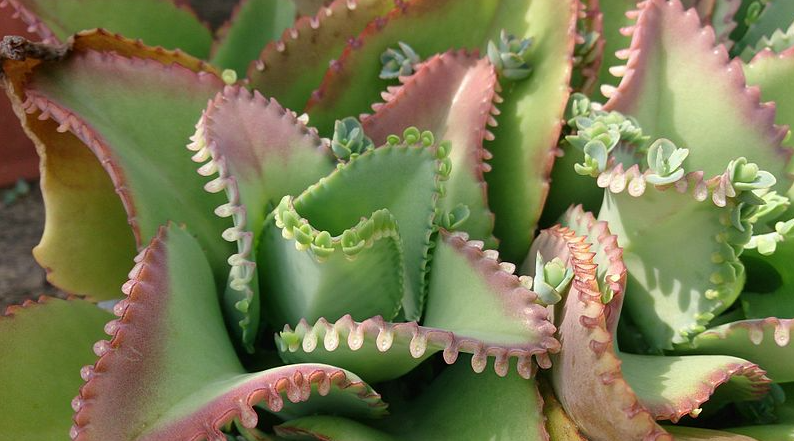Kalanchoe Delagoensis ‘Mother of Millions Plant’
This type of succulent has fans and foes. Some gardeners love it because it is unique looking, easy to care for, and propagates without any assistance. Other gardeners dislike it for the same reasons and even consider it a weed.
How to Identify Mother of Millions Plant
Oftentimes this succulent is misidentified as another similarly named plant called, Mother of Thousands Plant. These two have a lot in common, but there are still some distinguishing features that set them apart. Let’s look at each of their similarities and differences so that identifying a Mother of Millions Plant will be effortless.
Similarities
- Both plants are native to Madagascar
- Both plants can grow anywhere their seeds land
- Both plants grow rapidly
- Both plants tolerate intense heat once they are established
- Both plants require sun, soil, and water in the typical fashion of a succulent
- Both plants can handle drought conditions and soggy conditions
- Both plants propagate by growing plantlet buds on a stalk and then dropping them to the ground
- Both plants produce pendular flowers on a stalk
- Both plants are considered poisonous, noxious weeds in some parts of the world
Differences
- Mother of Thousands Plant grows broad, wide leaves in pairs. These leaves then produce tiny plantlets along their edges.
- Mother of Millions Plant grows narrow leaves that are not produced in pairs. These leaves produce tiny plantlets only on their tips.
Where Does Mother of Millions Plant Grow
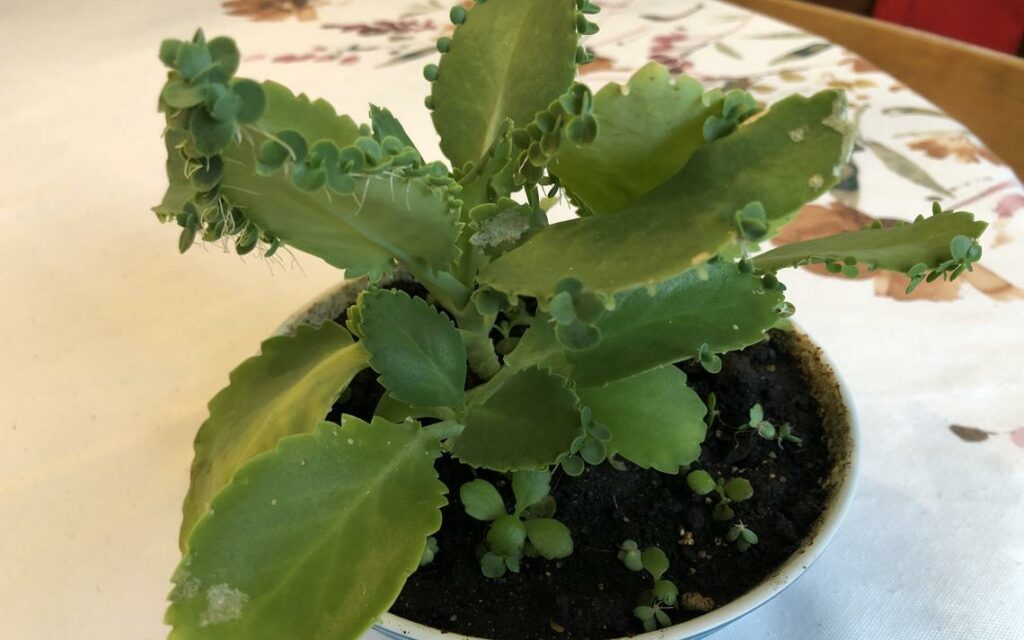
This succulent literally grows anywhere. For this reason, many gardeners consider it a weed and try to eradicate it from their lawn and garden. While it is originally from the island of Madagascar, it is now grown all over the world and in many different climates and soil types. It does well in drought-like conditions, in places with little to no sunlight, and unlike most succulents, it can even grow in soggy soil.
Uses of Mother of Millions Plant
This is a fantastic plant to put in your yard if you don’t have the time, the resources, or the talent to grow anything; it will take care of itself. It also makes a great indoor plant that will certainly create a lot of conversation due to its very odd appearance.
Whatever way you decide to use this plant, whether indoors or outdoors, please be aware that this plant will take over and it is hard to remove once it is established. Also, be aware that it is extremely toxic and has been known to harm animals that eat too much of it.
How to Grow Mother of Millions Plant from Seed
Just like most succulents, propagating a Mother of Millions Plant from seed is very time-consuming and difficult. These plants do produce tiny brown seeds but they are very difficult to find. Typically, this plant will take care of propagating itself, and consequently, growing them from seed is not a very common practice.
Mother of Millions Plant Growing Conditions
While this plant can grow almost anywhere, it is a native of the tropics, so it does have some preferences. It enjoys warm temperatures and indirect light. It also prefers well-drained soil.
When to Plant Mother of Millions Plant
Try planting the little plantlets during the warm months of summer and spring so they will get plenty of heat and sunlight.
How to Plant Mother of Millions Plant
Honestly, this plant doesn’t need any help propagating itself, but if you feel like digging in some dirt, here are the basic steps for planting a Mother of the Millions plant.
- Pick a plantlet from a healthy plant
- Fill a container with succulent potting soil
- Set the plantlets on top of the potting soil about an inch apart
- Cover the container with plastic wrap to keep in humidity
- Place the container in a sunny spot
- Moisten the soil, but do not let it get soggy wet
- Let the plants grow a little, then remove the plastic wrap
- Replant these in a bigger container or your yard
Mother of Millions Water Requirements
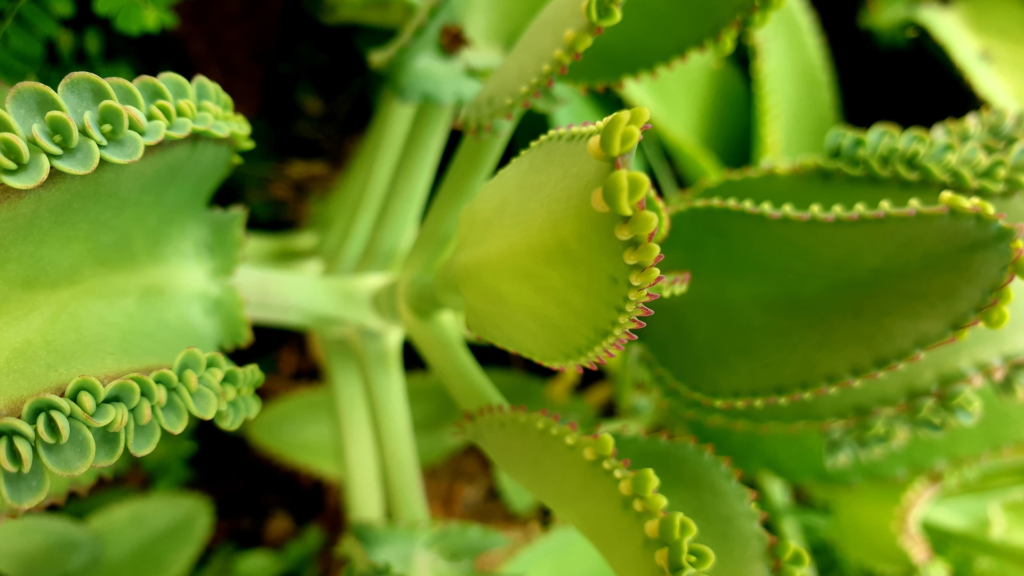
While these plants are very drought-tolerant, they do prefer a drink several times a week during the warmer months of spring, summer, and sometimes fall. They won’t need as much water in the winter, so be prepared to cut back at that time.
This plant can become overwatered and begin to droop and even shed its plantlets. If this happens, stop watering it and let it dry out, and recover from the excess water.
Mother of Millions Sun Requirements
This plant will enjoy plenty of sunlight as long as it is indirect. It will do it’s best growing in temperatures that are between 60- and 85-degrees Fahrenheit.
Best Mother of Millions Plant Fertilizer
Just like other succulents, this plant does not need fertilizer. Even still, it can be fed once a quarter with a liquid fertilizer designed for cactus.
If you feel like your Mother of Millions Plant needs a little food, try Cute Farms Succulent, Cactus & Aloe Fertilizer. It is a gentle formula that can be used on succulents and it will last for many uses.
Best Mother of Millions Plant Companion Plantings
If you want more than just one plant in your garden, try pairing your Mother of Millions Plant with another type of succulent. Here are just a few choice options.
Mother of Thousands
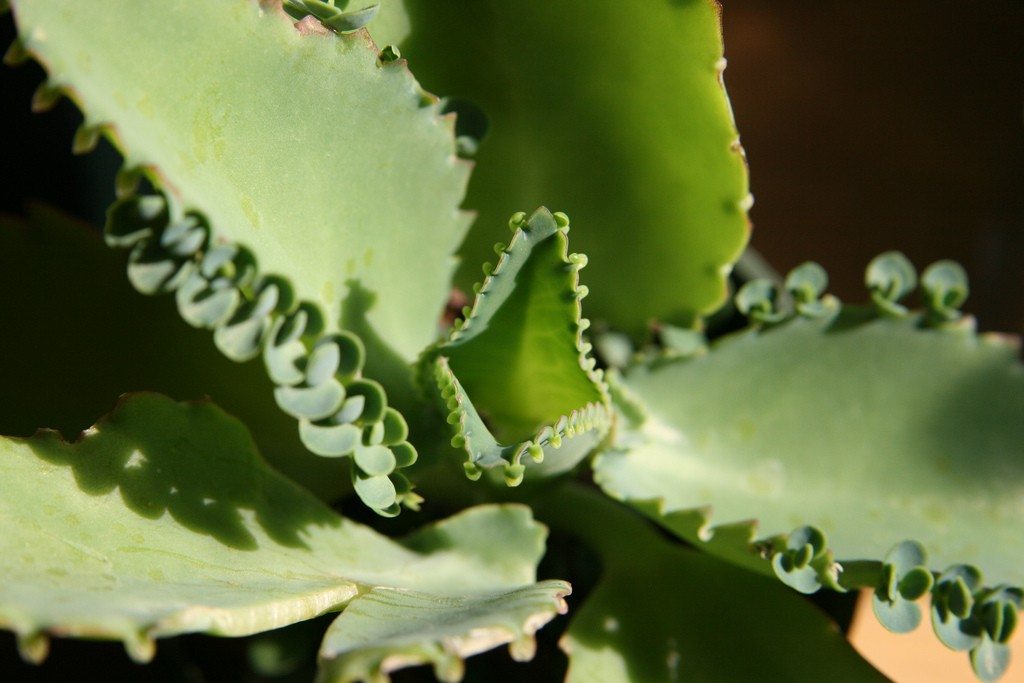
Why not go ahead and pair your Mother of Millions Plant with the plant it is so often misidentified as? This way, you will have both. Then, you can study them alongside each other to learn more about their nuances.
Pros:
- Requires the same conditions as a Mother of Millions Plant
- Propagates as easily and in the same way as a Mother of Millions Plant
Cons:
- It, too, can take over a lawn and garden
- It is toxic
Kalanchoe Tomentosa ‘Panda Plant’

This another companion plant option that is within the same genus as the Mother of Millions Plant. It, too, is easy to grow and makes a wonderful decorative plant on indoor shelving.
Pros:
- It is a plant that is easy to care for
- It is a favorite for children’s rooms
- It does not grow to be very large
- It does not require a lot of water or fertilizer
- It can live in lowlight conditions
- It is easy to propagate from leaf or stem cuttings
Cons:
- It is toxic to animals
- It is easy to overwater
Kalanchoe Varieties
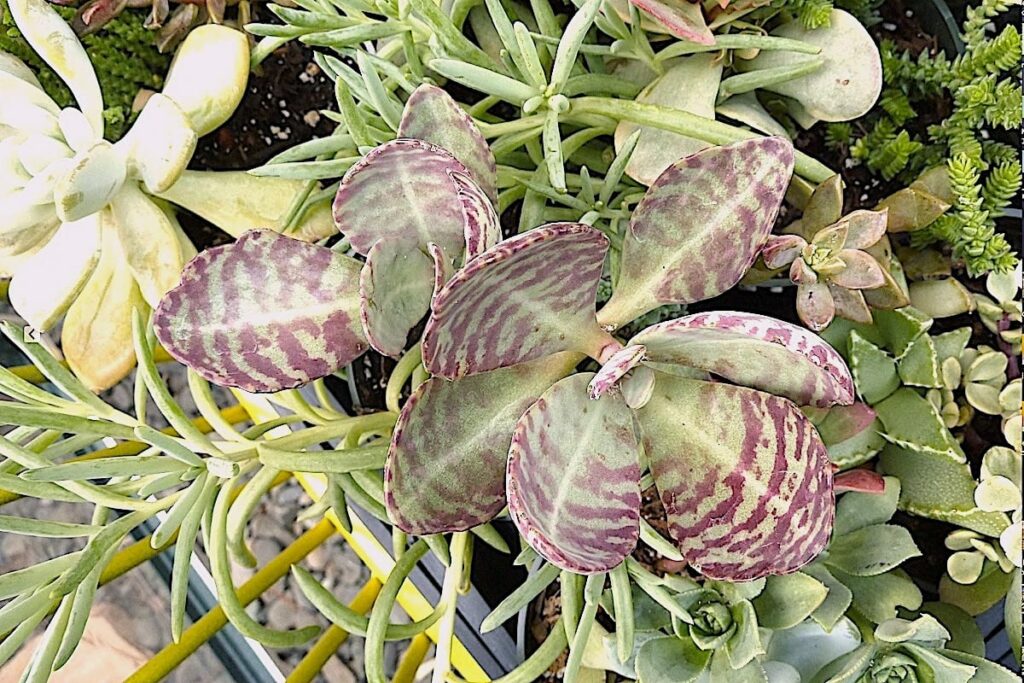
Any variety of Kalanchoe will pair perfectly with a Mother of Millions Plant; after all, they all originate from Madagascar and require many of the same resources and methods of care. These include the following:
- Plenty of bright, natural light
- Well-drained soil
- Infrequent watering
- Temperatures that range between 55 to 80 degrees Fahrenheit
- Small, infrequent feedings during the warm spring and summer months
Mother of Millions Plant Diseases and Common Problems
This is a very hardy plant with few problems, but it still has some. These are the things that most often cause this plant difficulty.
Harsh sunlight
Symptoms of harsh sunlight are wilted leaves, leaves with brown edges, yellowing or faded leaves
Too little sunlight
Symptoms of too little sunlight are long scraggly stems
Overwatering
Symptoms of overwatering are brown leaves that are mushy and transparent
Mother of Millions Plant Treatments and Maintenance
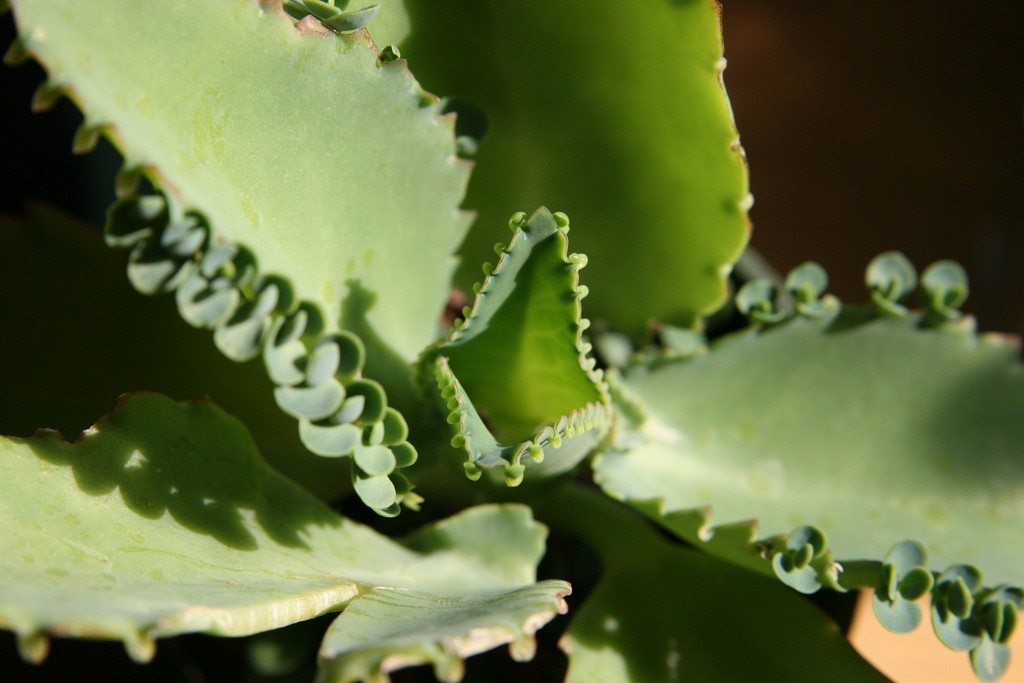
Harsh sunlight
If you begin noticing that your plant has turned brown, is dry, or faded in color, you could be dealing with a sunburnt plant. The best treatment for too much sunlight is to immediately move the plant to an area where it partially shaded until it can recover.
Too little sunlight
If you begin to notice that your plant is not growing and its stems are leggy and naked of leaves, you could be dealing with a plant that needs more sunlight. The best treatment for this condition is to move the plant to a location where it can get more sunlight. Be sure to acclimatize it with the new amount of sunlight so that you don’t risk burning it.
Overwatering
If you begin noticing leaves on your plant that are brown, mushy, or transparent, you are probably dealing with a plant that has been given too much water and is susceptible to root rot. The best treatment for this condition is to dry out the plant.
Don’t give the plant any more liquids until it and the soil have fully dried. If the plant is in a container, move it to a place that will allow the excess water in the container to drain. If the plant is in the ground, it is going to be a difficult thing to fix and unless your weather patterns dry out the soil quickly, you may end up needing to replace your succulents.
Mother of Millions Plant Repotting Instructions
Repotting Mother of Millions Plant couldn’t be easier. Just follow these steps:
- Remove the plant from its current container
- Fill a container with succulent potting soil
- Set the plant into a hole in the potting soil
- Place the container in a sunny spot
- Moisten the soil, but do not let it get soggy wet
Where to Buy Mother of Millions Plant Seeds Online
When looking for Mother of Millions Plant seeds, it is necessary to remember three things.
- Seeds from this plant are rare
- This type of plant is considered a weed in some places so its seeds may not be easy to find
- This type of plant is often mislabeled
The best thing to do if you are interested in purchasing the seeds of this plant is to contact an online shop that deals in rare seeds. These two shops are a good place to begin:
Where to Buy Mother of Millions Plants Online
While it may be difficult to purchase the seeds of this plant anywhere, especially online, it is an entirely different story when it comes to the actual plant. But it is important to thoroughly examine what product you are purchasing because even grown Mother of Millions Plant can be mislabeled. If you are interested in getting one of these for your home or garden, try one of these online sellers.
FAQs
Question: What Are the Symptoms of Toxic Poisoning from Mother of Millions Plant?
Answer: These plants are considered toxic to animals and should be kept away from them. This includes typical family pets such as dogs and cats it but also includes birds and cattle. If you suspect that your pet or an animal may have ingested one of these plants look for these symptoms:
- Vomiting
- Diarrhea
- Drooling
- Sluggishness
- Weakness
- Upset stomach
- Changes in heart rate and heart rhythm
- Collapse
- Tremors
- Dilated pupils
If you notice any of these symptoms it is imperative that you contact your veterinarian or the ASPCA Animal Poison Control Center at 888-426-4435 right away.
Question: How Can Mother of Millions Plant be Removed if it Begins to Overtake a Yard?
Answer: First, it is important to note that these plants will overtake a yard very easily. They are hardy, they grow quickly, and they propagate quickly. This is why it is recommended that they planted in containers and kept away from lawn areas where they can shed their plantlets. With this plant, it is more a matter of containment than it is of propagation. Prevention is the best way to deal with this plant.
Now, if you happen to have more Mother of Millions Plant than you know what to do with and you need a way to clear some space, here are a few tips for dealing with them.
- Pull the plants out of the ground
- Remove all the plantlets that you find
- Burn the plants and the plantlets
- Watch for sprouting plants (plantlets produce many seeds that can germinate after many months of dormancy)
- Repeat this process until your lawn is cleared
Other options for dealing with these plants are:
- Burning the entire lawn (with permits of course)
- Introducing insects that will kill the plant (Osphilia tenuipes and Scirtothrips aurantti)
- Applying an herbicide (the health of humans and animals in the area should be taken into consideration before doing this)
Concluding Thoughts
Mother of Millions Plant is certainly a controversial one. Some gardeners love it and yearn to propagate more of it in their homes and gardens. Other gardeners are looking for a solution to rid their lawn and yard of it. Even with the drama that this plant brings to the gardening world, it is still a wonder to behold, and maybe it is the combination of drama, controversy, and wonder that will make this succulent the next big thing in your life.
Find more interesting guides below:
- Cephalocereus Senilis (Old Man Cactus) How To Grow and Care 101
- Ceropegia Woodii Variegata (Variegated String of Hearts) How To Grow Them Lush
- Senecio Vitalis (Narrow-Leaf Chalksticks): Care and Growth Guide
- Lophocereus Marginatus (Mexican Fence Post Cactus) - January 10, 2022
- Best Cactus Fertilizer Guide - January 9, 2022
- Selenicereus Grandiflorus (Queen of the Night) - January 3, 2022
